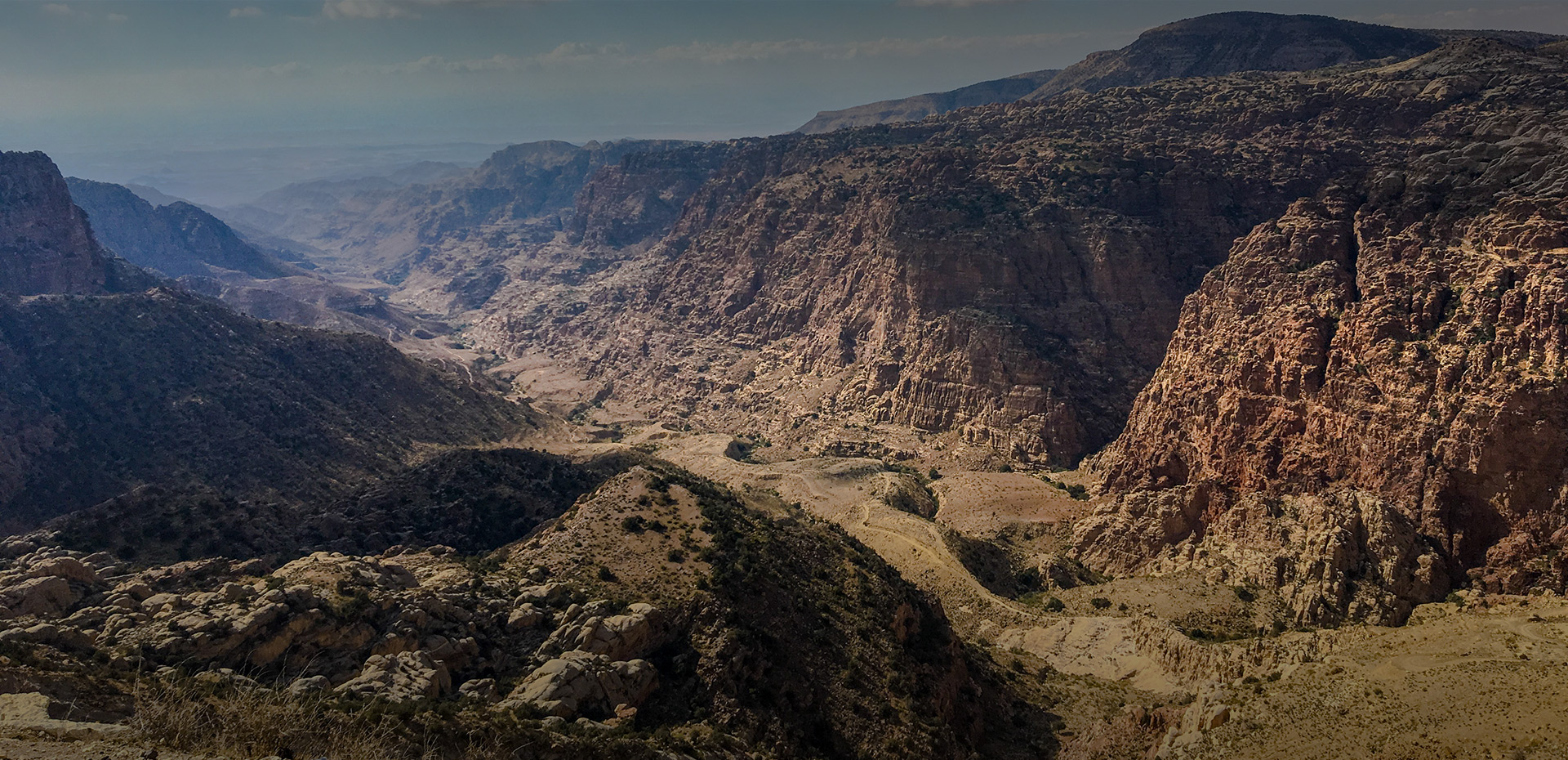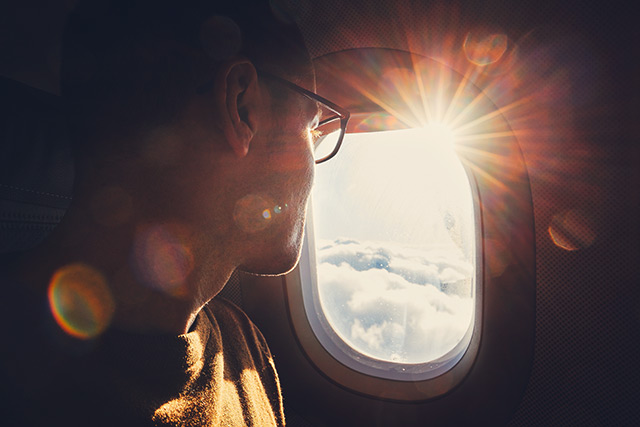
Day 01: Arrival at QAIA – Meet & Assist – Transfer to the hotel in Amman for overnight
You will arrive at Amman airport and will be met by our representative at the airport; you will transfer to your hotel in Amman for overnight.
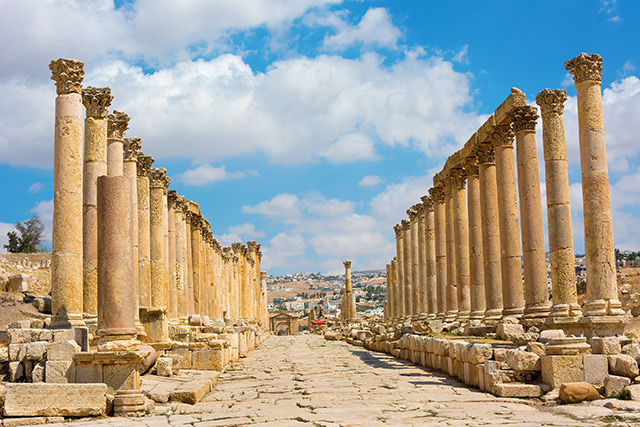
Day 02: Visit Jerash, Um Qais, Ajloun – Overnight at Ajloun Cabins
After breakfast at the hotel, you will transfer to visit Um Qais or Gadara of antiquity. Gadara commands a magnificent view over the northern Jordan Valley, the Sea of Galilee (Lake Tiberias), the Yarmouk River gorge and the Golan Heights. Then drive to the best preserved example of Roman civilization, the city of Jerash. Jerash, part of the Decapolis (the ten big Roman cities of the East) has been called the Pompeii of the East for its unique state of preservation.
The city features theaters, churches, temples (Zeus and Artemis), a Nymphaeum and colonnaded streets. After the visit, proceed to the Saracen castle at Ajloun. This 12th Century castle was built by Saladin in his successful campaign to drive the Crusaders from Jordan in 1189 and is an outstanding example of Arab/Islamic military architecture, and then you will transfer to Ajloun Nature Reserve.
Set amongst dense highland forest of evergreen oak, olive, pistachio, carob and wild strawberry the Ajloun Nature Reserve is a perfect overnight location for families. With both guided and self- guided walks you can try the easy Soap-Makers’ Trail, which leads from woodland cabin and tents where you stay overnight to the Soap House, a crafts project employing local women and where you can buy hand-made soap. Overnight Ajloun Cabins.
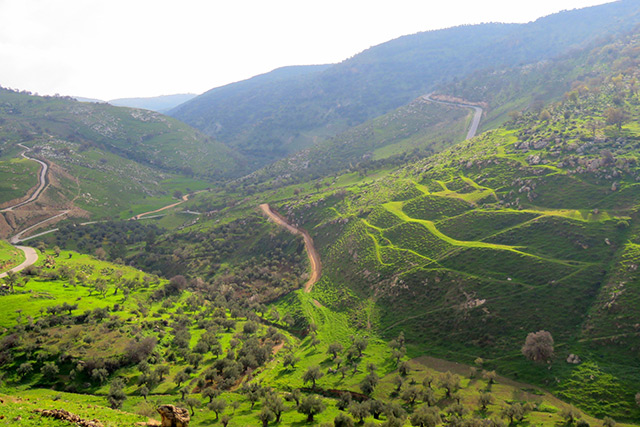
Day 03: Hike at Orjan village trail - Overnight at Ajloun Cabins
After breakfast, today the tour takes you through wooded valleys to the lush green orchards of Orjan village, giving you the chance to discover the rural lifestyle of the region. A poplar-lined spring provides a wonderful contrast to the arid mountains of the previous stages of the trail. As you hike, note the dramatic rock walls, old water mills once used by local people to grind their seeds and the hollow walnut tree. Enjoy a delicious traditional meal in an orchard of fig, pomegranate, apple and apricot trees. After this tour you will get back to Ajloun Cabins for overnight
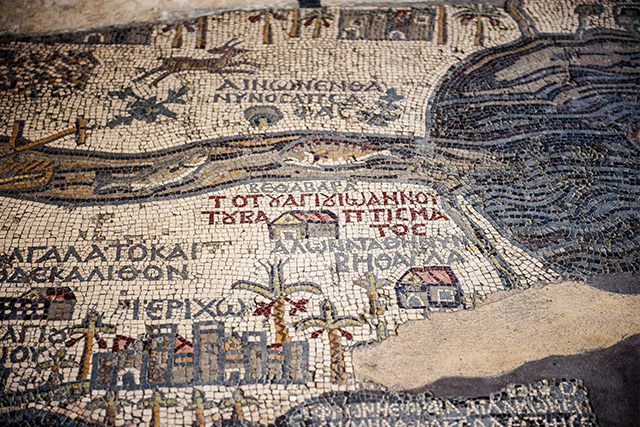
Day 04: Visit Madaba, Mt. Nebo, Wadi Rum (Jeep tour) Overnight at Wadi Rum Camp
Depart Ajloun to visit the mosaic city of Madaba, known as the City of Mosaics. Here you will visit the oldest map of the Holy Land on the floor of Saint George’s Church. Madaba, or Medeba in antiquity, features many famous mosaics that exist in public and private buildings.
After Madaba, a short drive will bring you to Mt. Nebo, the alleged burial site of Moses overlooking the Jordan Valley and the Dead Sea. From this mountain top Mosaic had his first glimpse of the Holy Land, a land he was never allowed to enter. Here Franciscans have built a structure that protects a 4th and 6th Century Byzantine church.
You will then transfer to the magical desert of Wadi Rum, home of “Lawrence of Arabia”. Upon arrival, you will take a jeep tour managed and driven by one of the local Bedouin to many of the sites in the moon-like landscaped desert. You will start from the visitor center and drive to Rum village about a 10 minute drive on paved roads.
After this you will head into the ochre coloured sandy desert as you visit the sites of Rum. Visit Lawrence’s spring this spring was named for T.E. Lawrence, of Lawrence of Arabia fame, who fought in the Arab revolt against the Ottoman Empire. Continue to Khazali Canyon an iconic feature in Wadi Rum, Khazali Canyon is an easy 20 minute walk that allows you to see many Nabatean inscriptions and drawings. Finally visit the Sand dunes, and then head back to the camp in Wadi Rum for overnight.
As the sun sets in Wadi Rum you will experience not only the changing temperature but also the changes in the color of the rock as and sand take on the deep red of the setting sun. As day turns to night the atmosphere of the desert changes from one of oppressive (heat) to relaxed and welcoming as the Bedouin prepare the fire and the sumptuous hospitality. Once the night a fully arrived the stars will come into their own as they light up the night sky. In clear morning light of sunrise the desert takes on a heavenly aura before the sun once again assumes control.
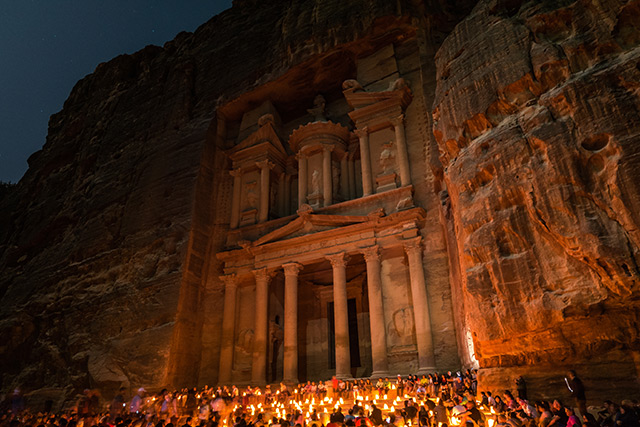
Day 05: Transfer to Petra from the back entrance – Overnight at the hotel in Petra
After breakfast, depart Wadi Rum to Petra for a full day tour of Petra. Meaning rock; is a historical and archaeological city in the Jordanian governorate of Ma’an that is famous for its rock cut architecture and water conduits system.
Established sometime around the 6th century BC as the capital city of the Nabateans, it is a symbol of Jordan as well as its most visited tourist attraction. It lies on the slope of Mount Hor in a basin among the mountains which form the eastern flank of Arabah (Wadi Araba), the large valley running from the Dead Sea to the Gulf of Aqaba.
Petra has been a UNESCO World Heritage Site since 1985.The site remained unknown to the Western world until 1812, when it was introduced by Swiss explorer Johann Ludwig Burckhardt. It was described as “a rose-red city half as old as time” in a Prize-winning sonnet by John William Burgon.
UNESCO has described it as “one of the most precious cultural properties of man’s cultural heritage. Excavations that revealed the astounding workmanship and the incredible ruins at Petra did not begin until 1924, and continue to reveal more information about the Nabataean Kingdom. Petra still forms part of the domain of the Bedouin, and you will see them with their horses and camels as you begin your unforgettable trip into this cultural landmark. After passing tombs outside the city, you come to the “Siq”, an immense crack in the Nubian sandstone almost one half mile long. This winding fissure separates overhanging cliffs that appear to meet 300 feet overhead. Near the end of the passage, the Siq makes one last turn with great style, and out of the gloom Petra’s most impressive monument Al Khazneh (The Treasury) appears in the towering brightness. One of the most elegant remains of antiquity, out of the, Al Khazneh is nearly 140 feet high and was carved from the mountain’s solid rock in the First Century B.C. Originally used as a Namataean king’s tomb, scholars believe Al Khazneh was later used as Nabataean temple. Film buffs will recognize it from its starring role in the final scenes of the movie “Indiana Jones and the Temple of Doom.” Overnight at your hotel in Petra
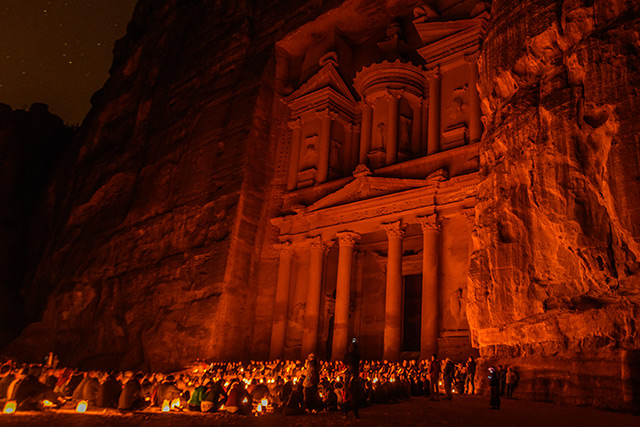
Day 06: Second visit to Petra – Proceed to Dana – Overnight at the Dana Guesthouse
Breakfast at your hotel, then you will have a second visit to explore about this magnificent site. After that, transfer to Dana nature reserve Dana Biosphere Reserve is the only reserve in Jordan that includes the four different bio-geographical zones of the country; Mediterranean, Irano-Turanian, Saharo Arabian and Sudanian penetration.
As such, it is the most diverse nature reserve in the country in terms of habitats and species, hosting several vegetation types, including the Phoenician Juniper, evergreen oak, sand dunes, acacia, and rocky sudanian, among others. It is also home to the southernmost remaining forest community of Cypress Cupressus simpervirens. Overnight tonight at Dana Guesthouse
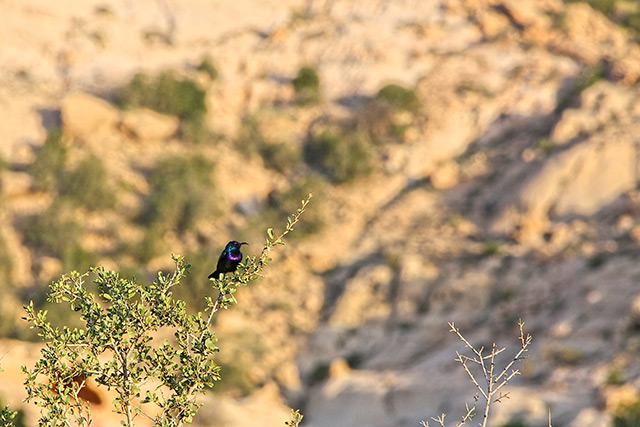
Day 07: Walk from Dana Guesthouse to Wadi Feynan - Overnight at Feynan Eco-Lodge
After breakfast at the lodge, you will make the downhill walk to the Wadi Feynan Eco lodge situated at the Wadi Araba end of the Dana nature reserve. The predominantly flat / gently downhill route passes through sandstone gorges and valleys.
Owned by the Royal Society for the Conservation of Nature it was designed and constructed in 2005 by renowned architect Ammar Khammash at the western edge of the Dana Biosphere Reserve. Before the lodge was built, the land was utilised as a campsite by archaeologists conducting studies and digs in the area.
The RSCN developed the campsite into an eco – lodge to provide economic opportunities for local communities and generate revenue for the conservation of Jordan’s wild places. In September 2009, Eco Hotels took over the management and operation of the lodge, offering travellers an unparalleled opportunity to experience Jordan’s wilderness, meet its native people and explore its ancient history, with minimal impact on the environment. Lit entirely by candles and run on solar power the Eco – lodge is a fantastic experience set in the rugged Araba Valley that was once home to the early Christian as they were forced to work in the local copper mines. Overnight at Fynan Eco-lodge
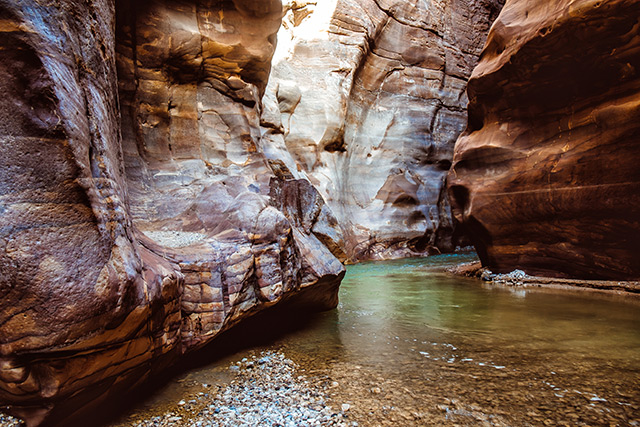
Day 08: Visit Wadi Al Mujieb included short trail – Overnight at Al-Mujib Chalets
In the morning depart Wadi Fynan to Wadi Mujib Nature Reserve, which covers an area of 212 km2. Bordering the Dead Sea at 416 meters below sea level, the Mujib Nature Reserve surrounds Wadi Mujib, a deep and majestic canyon that cuts through the rugged highlands and drains into the Dead Sea. Seasonal and permanent streams flow through many of the wadis, supporting luxurious aquatic plants in the river-beds.
These rivers also enable this otherwise arid area to support a remarkable diversity of wildlife. It is also one of the major sources that compensate the high evaporation rate of the Dead Sea, and then you transfer to the chalets for overnight.
Operated by the Royals Society for the Conservation of Nature the Chalets are built on to the Madash Peninsula and offer the only view of the Dead Sea with both an East / West and North / South perspective. Each of the 15 chalets has an uninterrupted sea view with a shaded terrace. Access to the Dead Sea and the fresh water showers is for private use of those staying in the chalets.
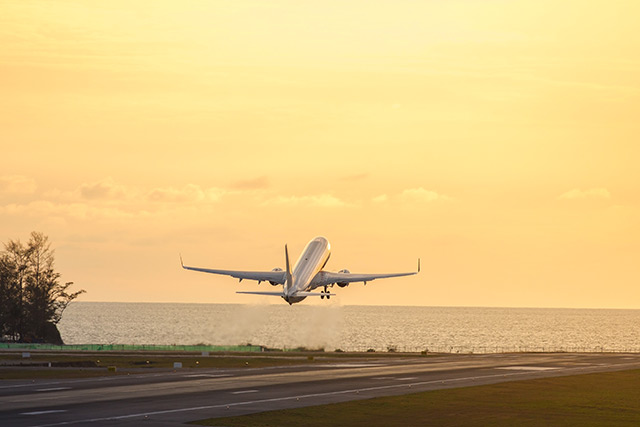
Day 09: Transfer to QAIA for departure
You will transfer to Amman airport to fly back home with safe trip
